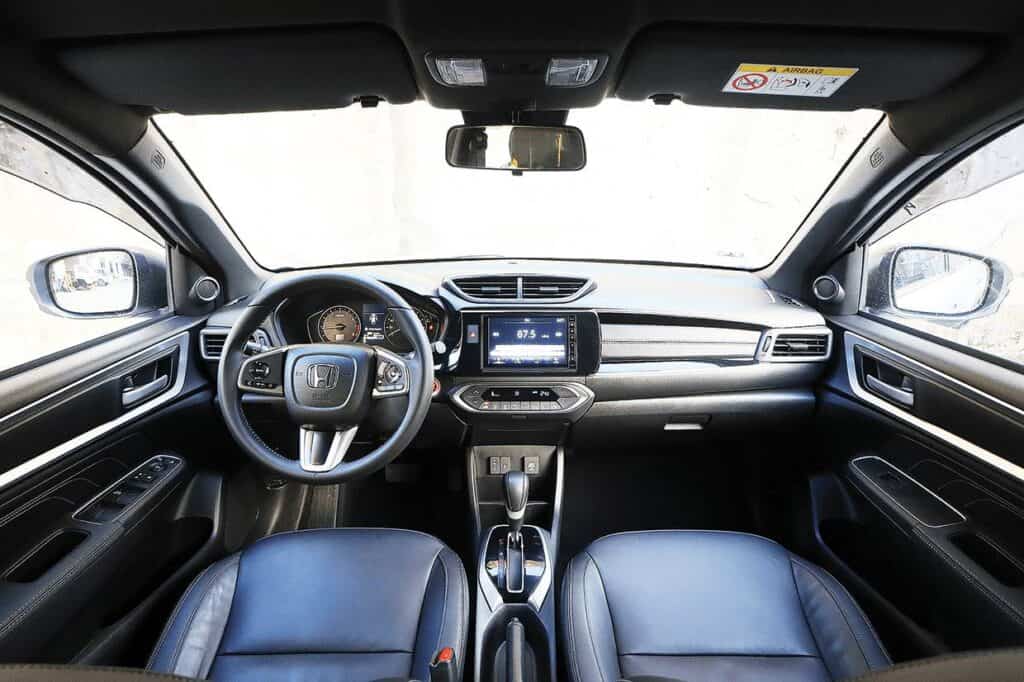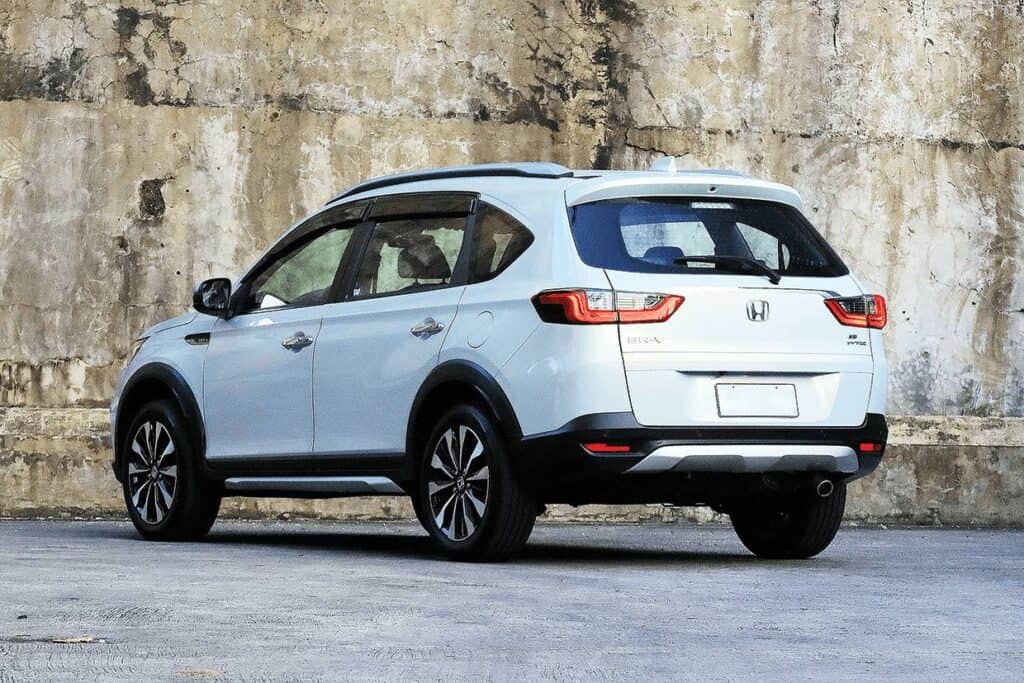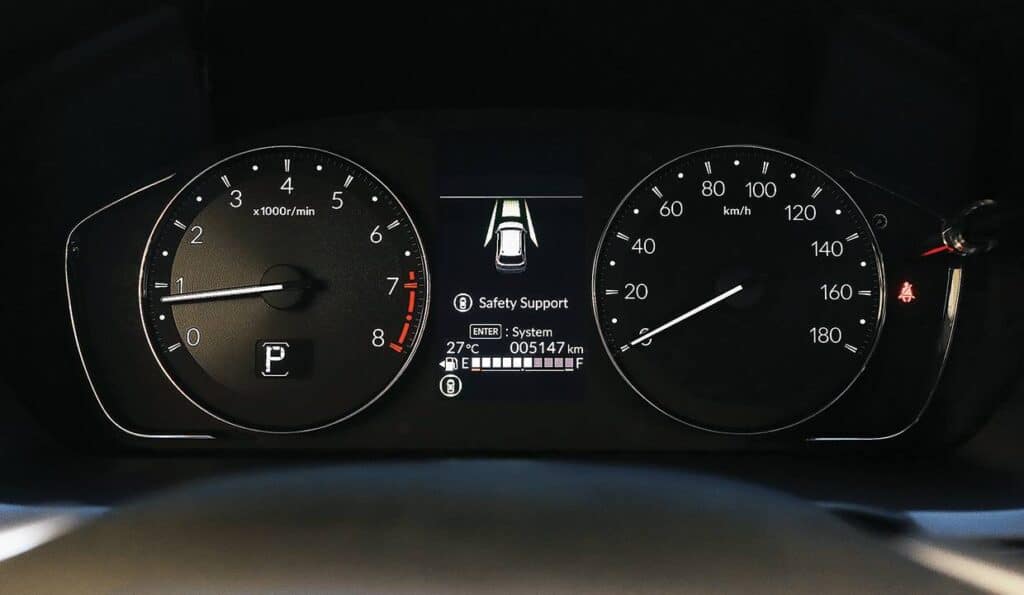From a purely enthusiast’s standpoint, it’s hard to get excited about these small 7-seater MPVs/SUVs. With their compact proportions and fuel-efficient powertrains, they serve the purpose of ferrying a family. Excitement isn’t its middle name; excitement can’t even be mentioned in the same sentence. Once in a while though, there’s one that’ll manage to stand out in a good way. The Honda BR-V is one of those.
Frankly, the BR-V won’t be rewriting the rules on subcompact SUV handling. However, its tried-and-tested suspension—front MacPhersons and rear torsion beam—is tuned well enough. A switch over to a new platform with a lengthened wheelbase and widened tracks makes a tidy handler even tidier. The tuning is more towards understeer, but body lean is well-controlled. The steering too is precise, making most of the chassis’ built-in stability.

On the other hand, the ride itself is firm. Nothing backbreaking or fat jiggling, mind you, but small undulations and cracks do make their presence felt. Over bigger holes, the BR-V does better, soaking as much as its modestly-engineered long-travel suspension can handle. Thankfully, the body structure is sturdy enough that there are no rattles or squeaks present. However, if there’s some room for improvement, it’s NVH insulation. Simply put, there’s copious amounts of road noise.
The BR-V’s thin insulation also happens to exacerbate the engine noise. Normally, you’d love to hear the engine, right? Here, Honda should have kept it isolated. As rev happy and powerful (for its class) as this 1.5-liter is, it also produces this unattractive drone. Thankfully, you don’t need to keep that right foot planted all the time since the engine does have respectable punch. As for fuel economy, during our Pasig to Baguio City climb, it returned 14.7 km/L. For this one, with an average speed of just 15 km/h, or typical day-to-day traffic, that figure is still a commendable 9.70 km/L.

The interior has this almost default combination of piano black and silver trim, and what seem like a combination of leather and PVC upholstery. There are soft-touch areas like the padded dash insert and the door cards, but most materials are still of the hard variety. Still, build quality is excellent and the consistency of materials do indicate a level of engineering meticulousness.
The most important bit, the steering wheel is nicely done. The thick rim offers nice grip and the bank of controls—infotainment on the left, multi-info display and cruise control on the right—are easily understood. Sadly, Honda has still chosen to omit any telescopic adjustment here. It’s not a big deal, but it is contrary to their nature of putting the needs of the driver ahead of anything else.

The front seats offer good support. They’re not only comfortable, but thanks to a height adjuster, it can accommodate a wider range of body types. Meanwhile, the second-row seats have plenty of headroom. It’s also has three individual headrests and three-point seatbelts. There’s a center armrest too. For those who’ll need to use the third row, access is good because of the wide doors and a second row that flips and tumbles. However, there’s not much couple distance to go by; but at least there’s ample headroom.
When it comes to its cargo hold, Honda has removed the third-row bench’s ability to tumble up. It may feel like a step back, but it gives it the ability to fold flat with the second-row seats creating a long, continuous luggage area perfect for hauling luggage, grocery, or even balikbayan boxes. The range-topping VX also has an adjustable shelf behind the third row.
The instrument cluster features Honda’s traditional two-gauge analog setup. It trades snazziness for a clear, legible presentation. The LCD cluster can toggle through various functions, but its focus surrounds the Honda Sensing system. The same can be said about high-resolution 7-inch infotainment system in the middle. Sadly, the system’s temperamental Apple CarPlay and Android Auto connections are supposed to be straightforward, but here, the BR-V drops them unexpectedly and refuses to reconnect unless you switch the entire car, not just the audio system, off.
For safety, the BR-V’s Honda Sensing system works as advertised. The wide-angle monocular camera provides systems such as Autonomous Emergency Braking, Adaptive Cruise Control, and Lane Keep Assist—all of which don’t give off any false alarms. However, the Adaptive Cruise Control turns on only at speeds above 40 km/h. There’s no low-speed follow or traffic jam support. Per Honda, it’s because buyers won’t need the feature—an irony because this 7-seater SUV will probably spend most of its time in the city.
As far as 7-seater SUV/MPVs go, the BR-V shows why Honda’s still one of the best in the business in coming out with a mechanically polished ride. Given where it is in the market, of course some compromises had to be made, particularly in the areas of NVH and that infotainment system. But where it counts—mechanical polish, interior packaging, and usable tech—it delivers an experience that’s above others in its class. Yes, it is expensive, but every single cent’s accounted for here. The BR-V is the Honda of small 7-seater SUVs, and that’s probably what enthusiasts only need to know.

